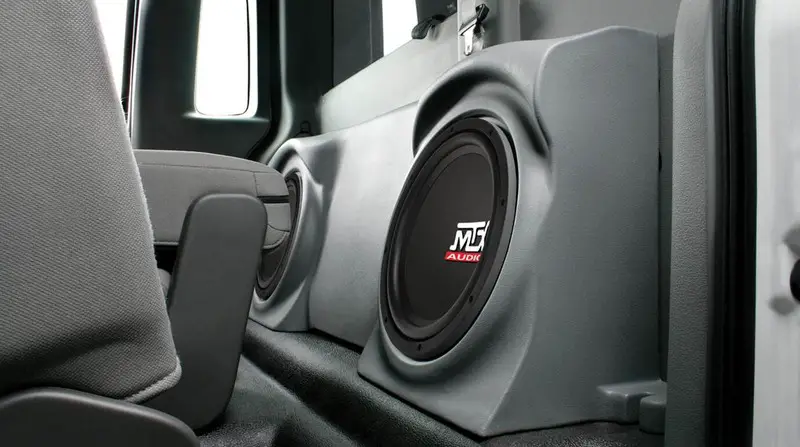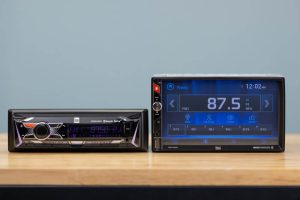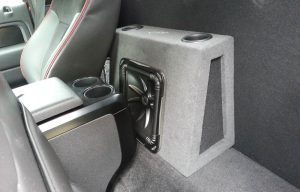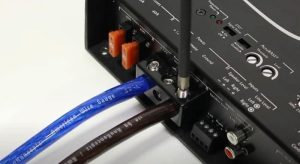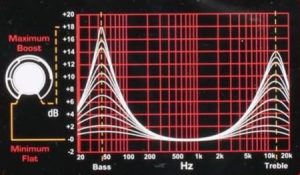A car subwoofer buzzing, humming, or crackling without any music playing can drive you up the wall. You expect deep, powerful bass when you crank your tunes, but instead, you’re hearing annoying noises when the system’s off. This issue isn’t just frustrating—it can signal underlying problems with your car audio setup. Let’s dive into the reasons your subwoofer is acting up, explore practical fixes, and share tips to keep your sound system crystal clear. By the end, you’ll know how to troubleshoot and prevent these pesky noises.
Contents
Common Causes of Subwoofer Noise Without Input
Your car subwoofer might be making noise for several reasons. Identifying the root cause is the first step to silencing it. Here are the most common culprits:
1. Ground Loop Interference
Ground loops happen when different components in your audio system have mismatched ground points. This creates a small electrical current that flows through your subwoofer, causing a low-frequency hum or buzz. Imagine your car’s electrical system as a busy highway—when signals take the wrong exit, they clash, and you hear the result.
To fix this, ensure all audio components share a single, solid ground point. Check your amplifier’s grounding wire. It should connect to a clean, unpainted metal surface on your car’s chassis. Scrape away any rust or paint for a strong connection. If the noise persists, a ground loop isolator can block the unwanted current.
2. Faulty or Loose Wiring
Loose or damaged wires are a recipe for audio chaos. A frayed RCA cable, a poorly connected power wire, or a loose speaker wire can introduce static, crackling, or popping sounds. Vibrations from your car’s movement can worsen these issues over time.
Inspect all connections to your subwoofer and amplifier. Tighten any loose terminals and replace damaged cables. Use high-quality, shielded RCA cables to reduce interference. While you’re at it, secure wires with zip ties to prevent them from rattling against metal surfaces.
3. Electromagnetic Interference (EMI)
Your car is a hotbed of electrical activity. Alternators, ignition systems, and even your phone charger can emit electromagnetic waves that sneak into your audio system. This interference often manifests as a high-pitched whine or buzzing that changes with engine speed.
To tackle EMI, keep audio cables away from power cables. Run RCA cables along one side of the car and power wires along the other. Ferrite beads, clipped onto your cables, can also absorb stray electromagnetic signals. If the noise syncs with your engine’s RPM, check the alternator’s ground and consider a noise filter.
4. Amplifier Issues
A faulty amplifier can send unwanted signals to your subwoofer, even when no music is playing. Problems like a malfunctioning input stage or a failing power supply can cause humming or hissing. In some cases, the amp’s gain is set too high, amplifying background noise.
Test your amplifier by disconnecting the RCA cables. If the noise stops, the issue lies upstream (likely the head unit or cables). If it continues, adjust the amp’s gain settings or have it inspected by a professional. A high-quality amplifier with proper shielding can prevent these headaches.
5. Subwoofer Damage
A damaged subwoofer cone, voice coil, or surround can produce buzzing or rattling noises, even without input. Physical wear, overloading, or manufacturing defects might be to blame. For example, a torn cone vibrates irregularly, creating unwanted sounds.
Examine your subwoofer for visible damage. Gently press the cone to check for scraping or grinding sensations, which indicate a misaligned voice coil. If the subwoofer is damaged, replacement is often the best solution. Choose a model that matches your amplifier’s power output to avoid future issues.
6. Head Unit or Source Problems
Your car’s head unit or media player could be sending noisy signals to the amplifier. A faulty preamp output or a low-quality DAC (digital-to-analog converter) can introduce static or hum. Cheap auxiliary cables or Bluetooth receivers are also common culprits.
Test the system with a different audio source, like a high-quality MP3 player or a new phone. If the noise disappears, the original source is likely faulty. Upgrade to a better head unit or use shielded cables to minimize interference.
7. Power Supply Noise
Your car’s electrical system powers your audio setup, but it’s not always clean. Voltage fluctuations or a weak battery can cause your amplifier to produce hums or whines. A failing alternator might also introduce noise as it struggles to keep up with demand.
Check your battery’s voltage with a multimeter—it should read around 12.6V when the car is off and 13.7–14.7V when running. Ensure all power connections are tight and corrosion-free. Adding a capacitor to your audio system can stabilize voltage and reduce noise.
How to Diagnose Subwoofer Noise
Pinpointing the cause of subwoofer noise requires a systematic approach. Follow these steps to narrow it down:
- Turn Off the System: Start with the audio system off. If the noise persists, the issue is likely electrical (ground loop, EMI, or power supply).
- Check Connections: Inspect all cables and terminals. Look for loose connections, frayed wires, or corrosion.
- Isolate Components: Disconnect the RCA cables from the amplifier. If the noise stops, the problem is before the amp (head unit or cables). If it continues, focus on the amp or subwoofer.
- Test with a New Source: Plug in a different audio source to rule out a faulty head unit or media player.
- Listen for Engine Sync: If the noise changes with engine speed, EMI or alternator issues are likely.
- Inspect the Subwoofer: Check for physical damage or mechanical issues in the subwoofer itself.
Using a multimeter or an oscilloscope can help advanced users measure electrical noise or ground issues. If you’re not comfortable with electronics, a professional car audio technician can diagnose complex problems.
Fixes for a Noisy Subwoofer
Once you’ve identified the cause, apply these targeted solutions to silence your subwoofer:
- Improve Grounding: Relocate the amplifier’s ground to a clean, unpainted chassis point. Use a thick, high-quality ground wire (at least 8-gauge) for a solid connection.
- Upgrade Cables: Swap out cheap RCA cables for shielded, high-quality ones. Avoid running audio and power cables together.
- Add Noise Filters: Install a ground loop isolator or an inline noise filter to block unwanted signals.
- Adjust Amplifier Settings: Lower the gain on your amplifier to reduce background noise. Set the crossover frequency to ensure the subwoofer only plays low frequencies.
- Shield Against EMI: Use ferrite beads or reroute cables to minimize electromagnetic interference.
- Stabilize Power: Add a capacitor or upgrade your battery to smooth out voltage fluctuations.
- Repair or Replace: Fix or replace damaged components, like a torn subwoofer or a faulty amplifier.
Preventing Subwoofer Noise in the Future
An ounce of prevention beats a pound of cure. Keep your subwoofer quiet with these proactive steps:
- Invest in Quality Components: High-quality subwoofers, amplifiers, and cables are less prone to noise. Brands like JL Audio, Rockford Fosgate, and Kicker offer reliable options.
- Plan Your Installation: Map out your wiring before installing. Keep power and audio cables separated, and choose a secure ground point.
- Regular Maintenance: Check connections and cables every few months. Tighten terminals and replace worn wires promptly.
- Match Components: Ensure your subwoofer, amplifier, and head unit are compatible. Mismatched impedance or power ratings can cause noise and damage.
- Use Proper Settings: Set your amplifier’s gain, crossover, and bass boost correctly to avoid overloading the subwoofer.
When to Seek Professional Help
Some issues, like complex ground loops or internal amplifier faults, require expert attention. If you’ve tried the above fixes and the noise persists, consult a car audio professional. They can use specialized tools to diagnose and repair your system. Look for certified installers through organizations like the Mobile Electronics Certified Professional (MECP) program.
Why a Quiet Subwoofer Matters
A noisy subwoofer doesn’t just ruin your listening experience—it can point to deeper electrical or mechanical problems. Left unchecked, these issues might damage your audio system or even your car’s electrical components. Fixing the noise now saves you from costly repairs later and restores the booming bass you love.
Additional Tips for Optimal Subwoofer Performance
To get the most out of your subwoofer, consider these bonus tips:
- Tune Your System: Adjust the equalizer settings on your head unit to balance bass, mids, and treble. A well-tuned system reduces strain on your subwoofer.
- Use a Proper Enclosure: Ensure your subwoofer is housed in a box designed for its specifications. A sealed or ported enclosure can enhance sound quality and reduce vibrations.
- Monitor Volume Levels: Cranking the volume too high can distort sound and damage your subwoofer. Keep levels within the manufacturer’s recommended range.
- Upgrade Your Alternator: If you’re running a high-powered audio system, a stock alternator might not keep up. A high-output alternator ensures steady power delivery.
Frequently Asked Questions
Why does my subwoofer hum when the car is off?
A hum when the car is off often points to a ground loop or a faulty amplifier. Check your ground connections and test the amplifier by disconnecting the RCA cables.
Can a bad battery cause subwoofer noise?
Yes, a weak or failing battery can cause voltage fluctuations, leading to noise in your audio system. Test your battery’s voltage and consider adding a capacitor.
How do I know if my subwoofer is blown?
A blown subwoofer might produce buzzing, rattling, or no sound at all. Inspect the cone for tears and test for scraping when gently pressing it.
Are noise filters worth it?
Noise filters, like ground loop isolators, can effectively reduce hum and interference. They’re a cost-effective fix for electrical noise issues.
Conclusion
A car subwoofer making noise without input is a common but fixable problem. By addressing ground loops, faulty wiring, EMI, or damaged components, you can restore silence when the music’s off and enjoy clean bass when it’s on. Diagnose the issue systematically, apply the right fix, and take preventive steps to keep your system humming-free. If the problem persists, don’t hesitate to call in a professional. With a little effort, your car audio setup will deliver the powerful, noise-free sound you crave.
